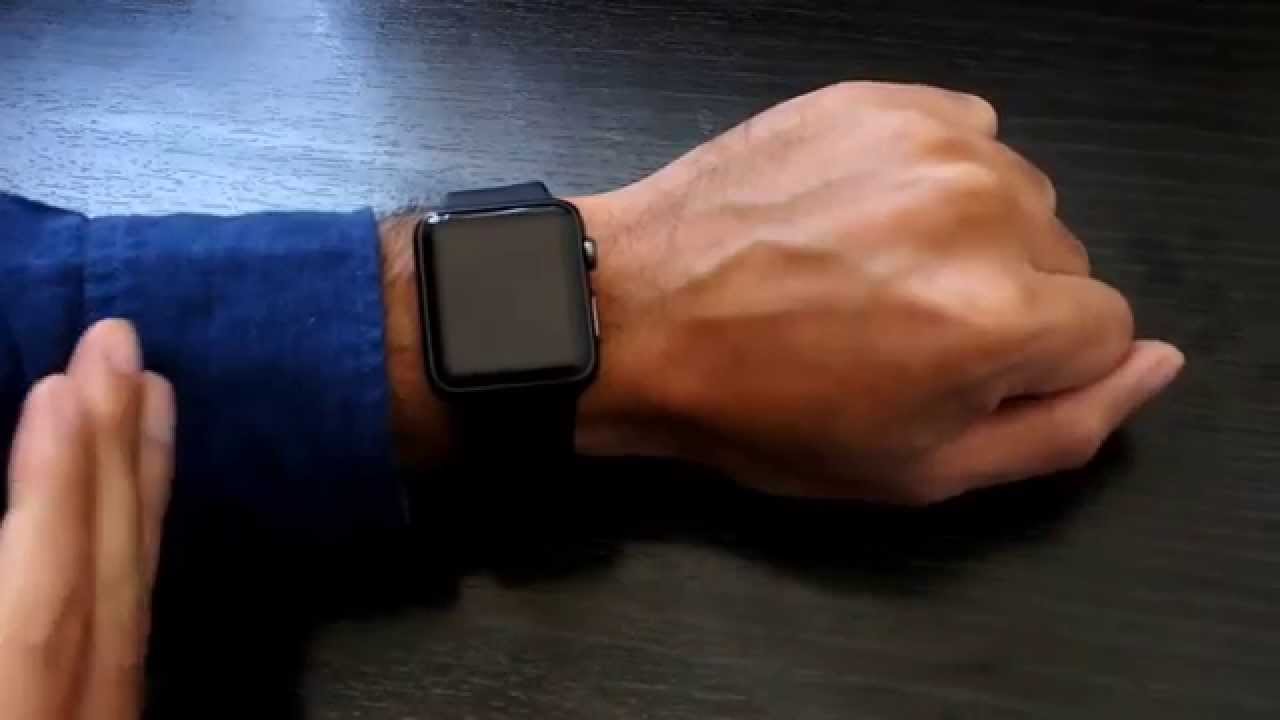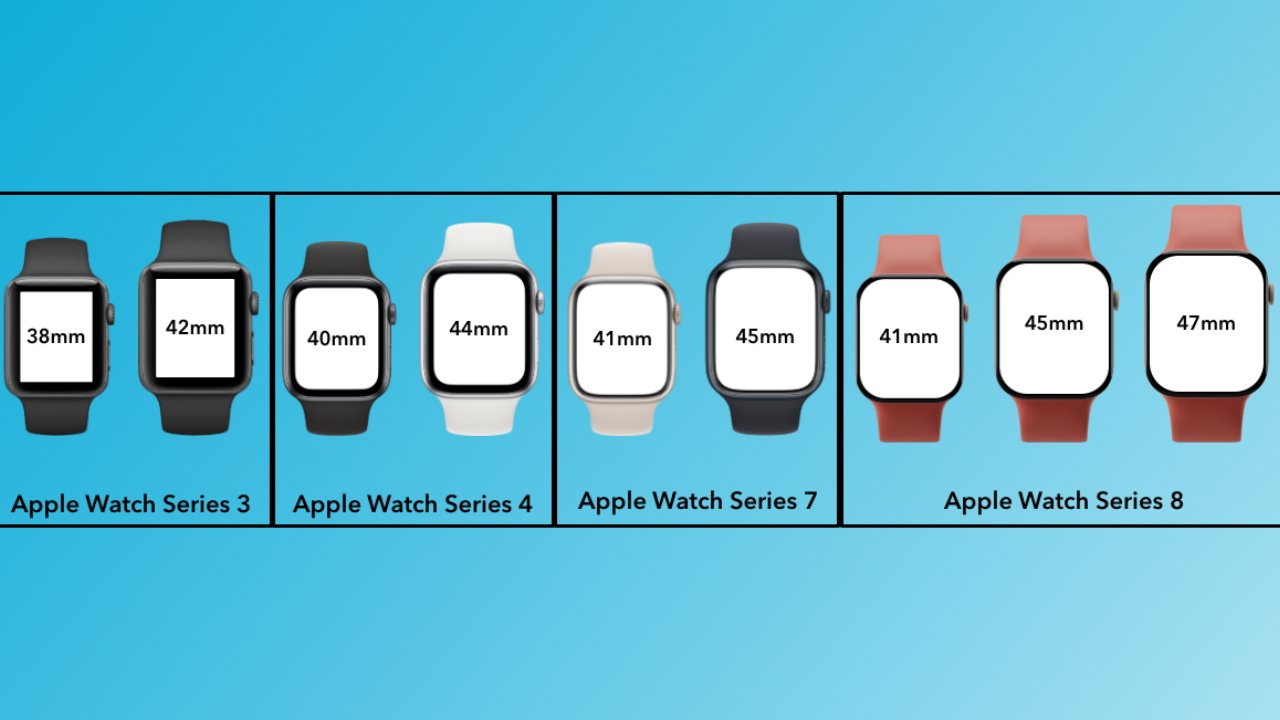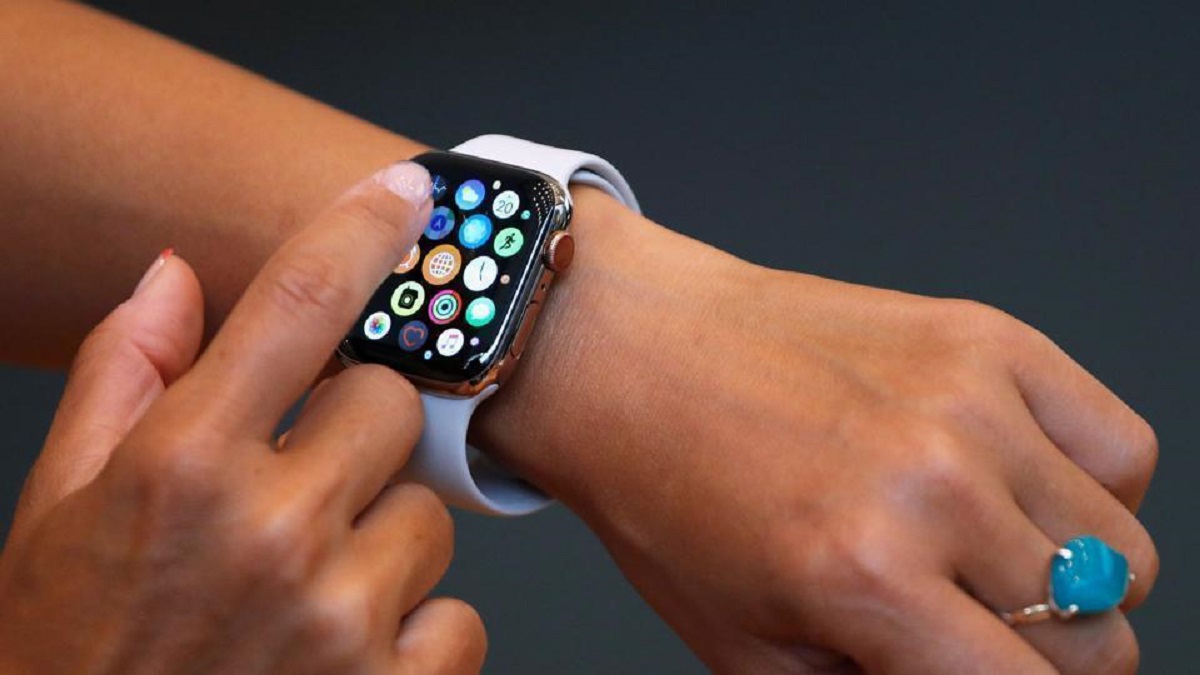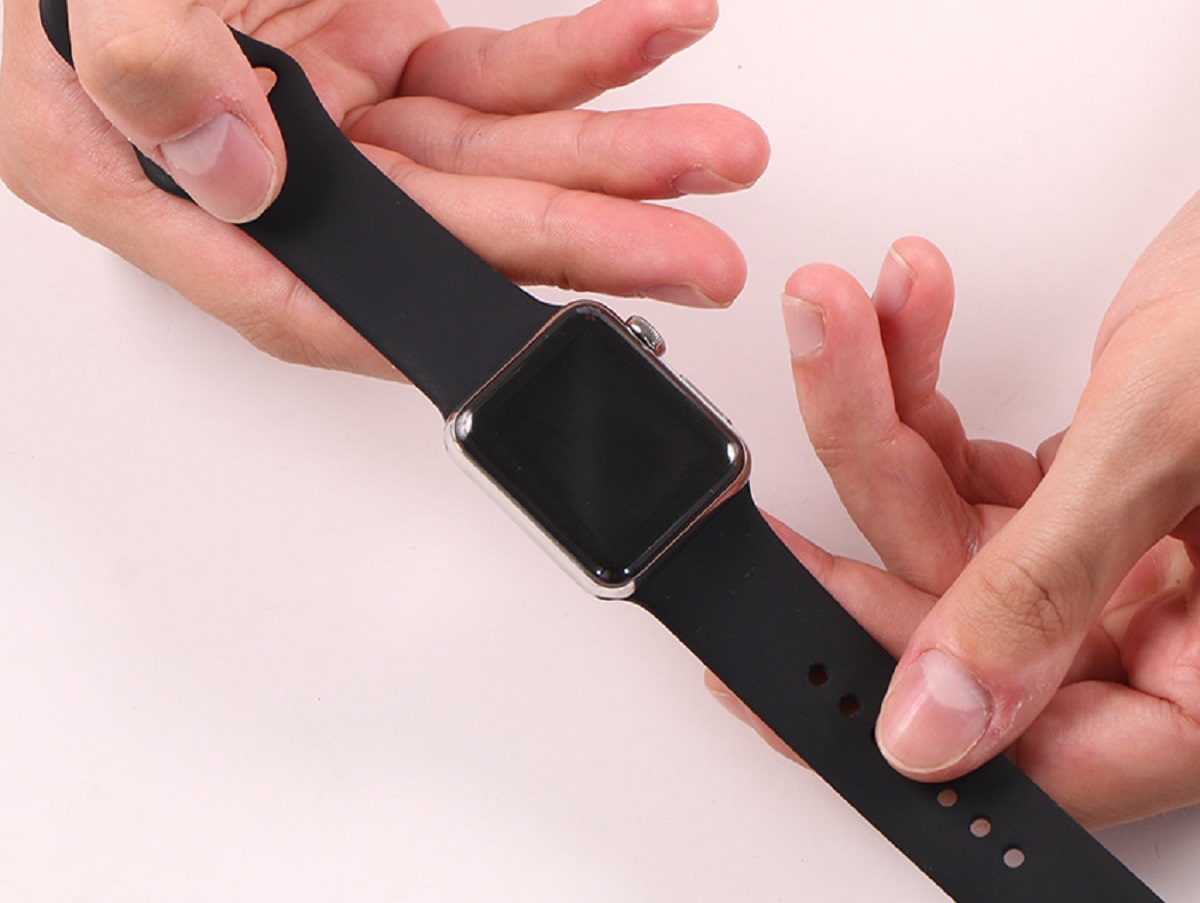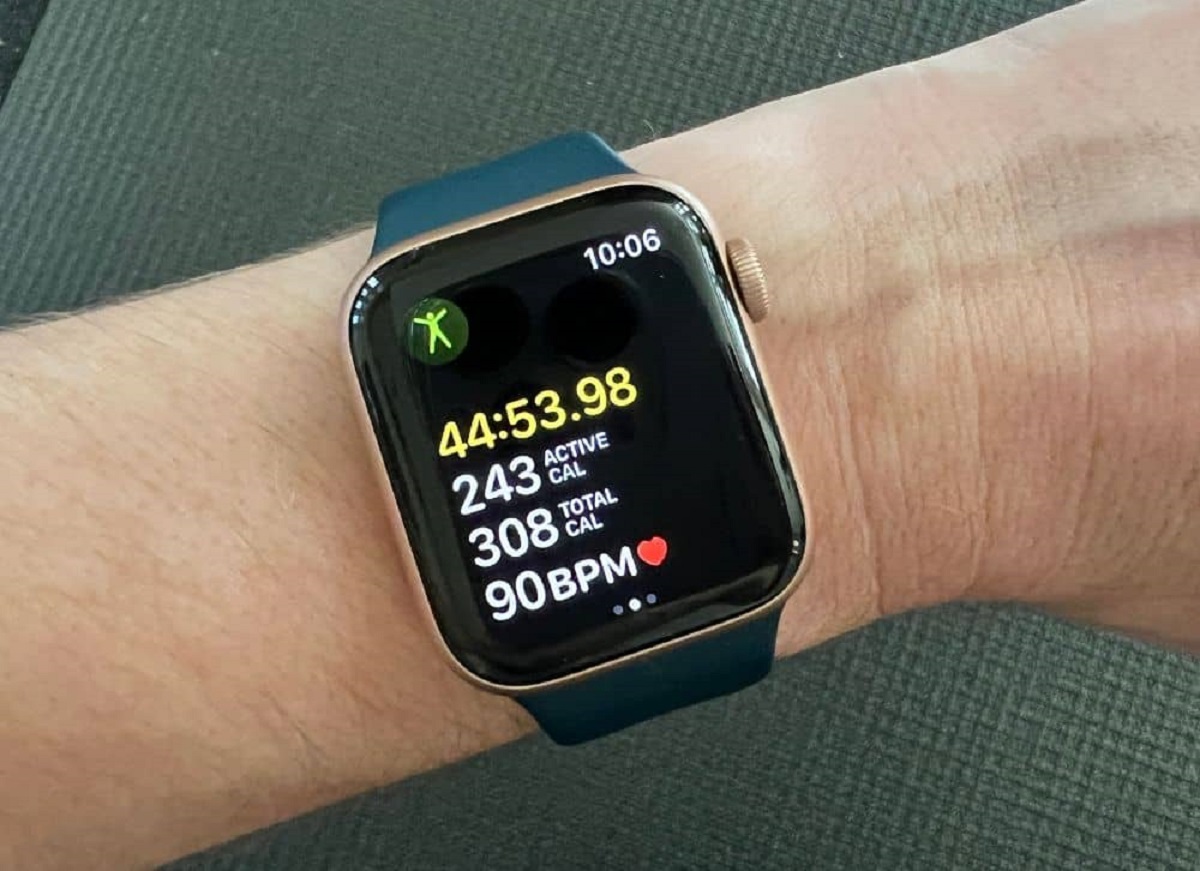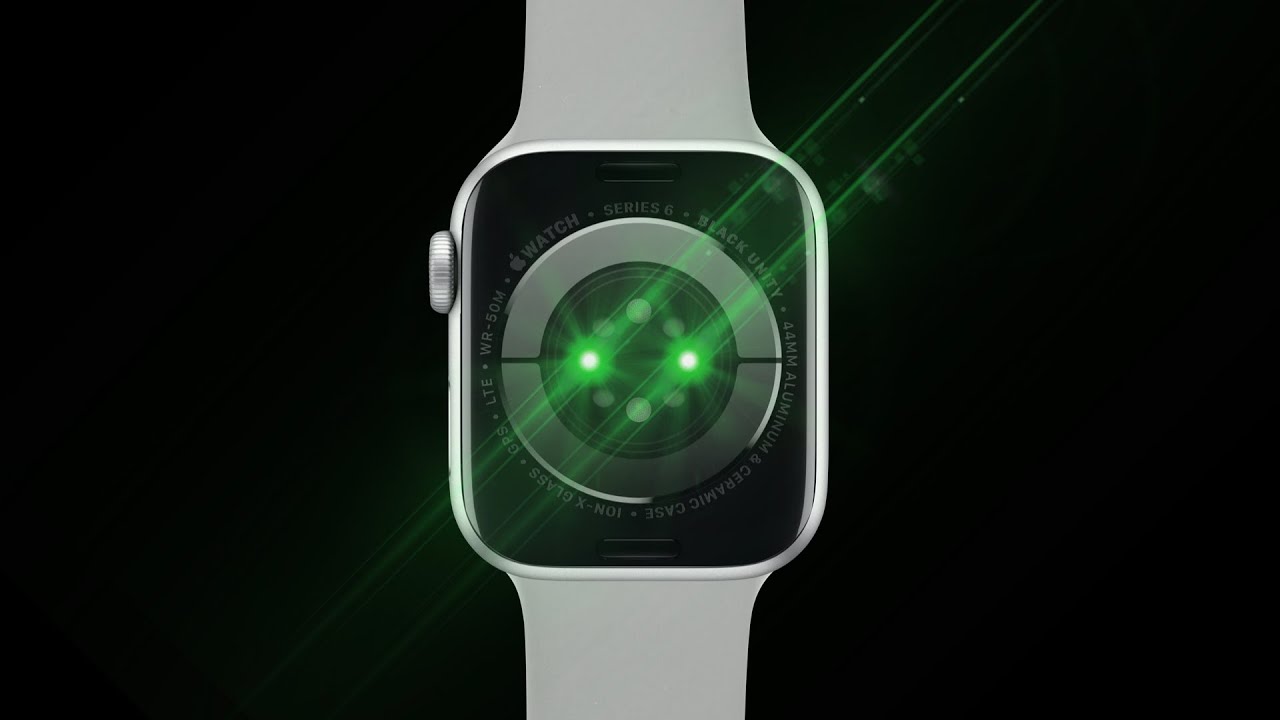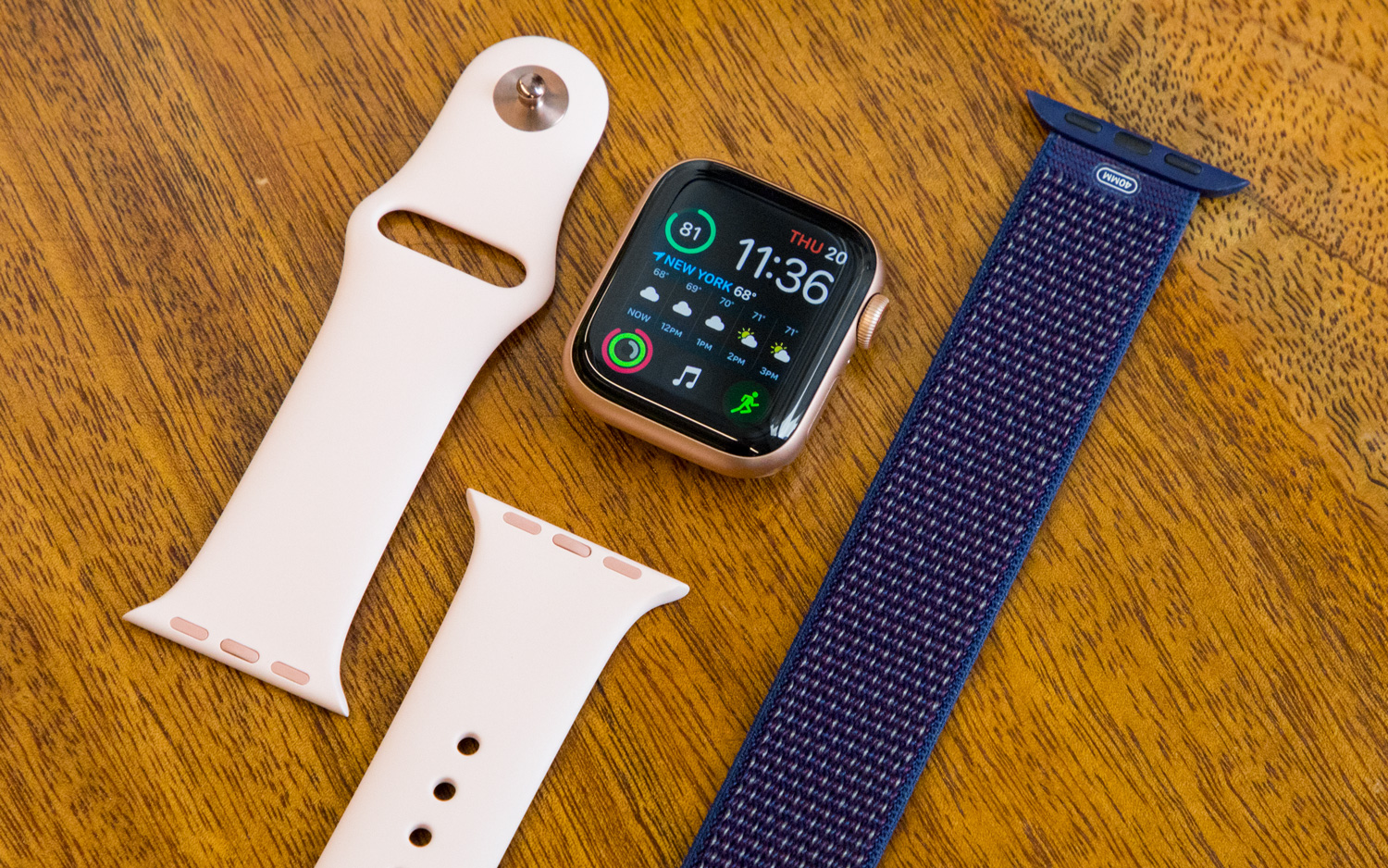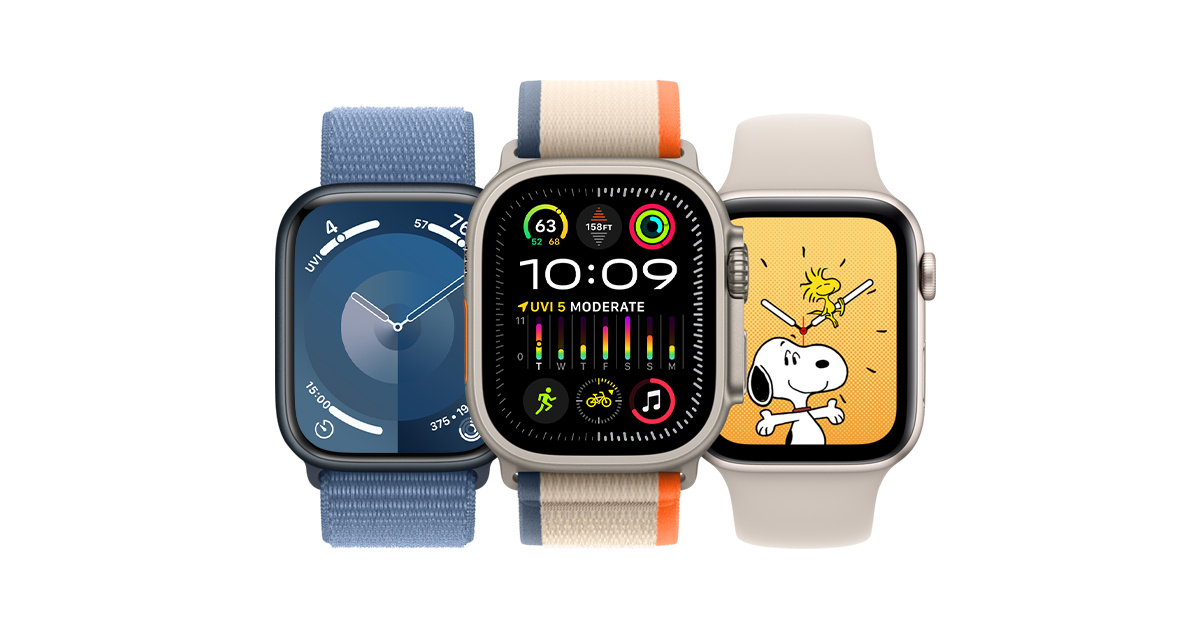Introduction
When it comes to wearing an Apple Watch, finding the right fit is crucial for comfort, functionality, and style. The way you wear your Apple Watch can greatly affect your overall experience and the accuracy of the device’s sensors.
Whether you’re an avid fitness enthusiast, a busy professional, or simply someone who values the convenience and technological capabilities of the Apple Watch, understanding how tight or loose to wear it is essential. By finding the perfect fit, you can ensure that your Apple Watch stays securely in place without causing discomfort or hindering its functionality.
In this article, we’ll explore the reasons why the fit of your Apple Watch is important and provide guidance on finding the right size band. We’ll also discuss how to check the tightness of your Apple Watch, how to adjust the tightness of your band, and the signs that indicate your Apple Watch may be too tight or too loose. Additionally, we’ll share some tips on how to wear your Apple Watch comfortably and securely.
So if you’ve been wondering how tight your Apple Watch should be or whether you’re wearing it correctly, read on to discover all the essential information to enhance your Apple Watch experience.
Why the Fit of Your Apple Watch is Important
The fit of your Apple Watch plays a crucial role in both comfort and accuracy. An ill-fitting watch can lead to discomfort, skin irritation, and a compromised user experience. Here are a few reasons why the fit of your Apple Watch is important:
- Comfort: Wearing a watch that is too tight can be uncomfortable, restricting blood flow and causing discomfort over prolonged periods. On the other hand, a loose watch can slide around and become distracting. Finding the right balance ensures a comfortable wearing experience.
- Functionality: The sensors on your Apple Watch, such as the heart rate monitor and accelerometer, require close contact with your skin to provide accurate data. If the watch is too loose, it may not be able to capture this information reliably.
- Activity Tracking: If you’re using your Apple Watch for fitness tracking or activity monitoring, an incorrect fit can affect the accuracy of the data. A loose watch may miss steps or incorrectly measure heart rate, while a tight watch may cause discomfort during physical activity.
- Style: The Apple Watch has become a fashion statement for many users. A well-fitting watch looks sleek and stylish, enhancing your overall appearance. An improperly fitted watch can detract from your outfit or appear mismatched.
By ensuring the proper fit of your Apple Watch, you can maximize comfort, accuracy, and style all at once. Next, let’s delve into how to find the right band size for your Apple Watch.
Finding the Right Size Apple Watch Band
Choosing the correct size band for your Apple Watch is essential to achieve a proper fit. The process of finding the right size involves considering both the case size and your wrist size. Here are some steps to help you find the appropriate band size:
- Know your Apple Watch case size: Apple offers different case sizes for their watches, typically 38mm, 40mm, 42mm, and 44mm. Determine the case size of your Apple Watch by checking the back of the watch or measuring the size of the case directly.
- Measure your wrist: Use a flexible measuring tape or a piece of string to measure the circumference of your wrist. Alternatively, you can use a printable wrist sizing guide provided by Apple to determine your wrist size.
- Check Apple’s official size guide: Apple provides a comprehensive sizing guide on their website that suggests appropriate band sizes based on wrist measurements and case size. Refer to this guide to identify the recommended band size for your specific Apple Watch model.
- Try on different bands: Apple offers a variety of band options, including sport bands, leather bands, and metal bands. Visit an Apple Store or authorized retailer to try on different bands in person and determine which one fits your wrist comfortably. Alternatively, you can use Apple’s virtual try-on feature on their website to visualize how different bands will look on your wrist.
It’s important to note that Apple Watch bands are designed to be adjustable, allowing for a more customized fit. Most bands come in different lengths and feature multiple notches or a buckle that can be adjusted to achieve the desired tightness.
By following these steps and considering your Apple Watch case size and wrist measurements, you can find the right size band that fits your wrist comfortably and securely. In the next section, we will discuss how to check the tightness of your Apple Watch.
Checking the Tightness of Your Apple Watch
Once you have chosen the appropriate band size for your Apple Watch, it’s important to check the tightness to ensure a comfortable and secure fit. Here are a few methods to help you determine if your Apple Watch is properly adjusted:
- Skin contact: When you wear your Apple Watch, it should have direct contact with your skin. Make sure the back of the watch is securely in contact with your wrist without any gaps. This allows the sensors on the watch to accurately monitor your heart rate and other data.
- One-finger test: Slip one finger between the band and your wrist. If it fits snugly and you can move your finger without any discomfort, the watch is likely adjusted correctly. However, if it feels too tight or too loose, you may need to readjust the band accordingly.
- Movement: Gently shake your wrist and move your arm around. Your Apple Watch should remain in place and not slide around. If it slides, it may be too loose, and if it feels too tight or restrictive, you may need to loosen the band slightly.
It’s important to find the right balance between a snug fit and comfort. A watch that is too tight can cause discomfort, skin irritation, and restrict blood flow, while a loose watch can be distracting and may not provide accurate data.
Once you have checked the tightness of your Apple Watch, you can make adjustments if necessary. In the next section, we will discuss how to adjust the tightness of your Apple Watch band.
How to Adjust the Tightness of Your Apple Watch Band
Adjusting the tightness of your Apple Watch band is a simple process that allows you to achieve a comfortable and secure fit. Here’s how you can make adjustments based on the type of band you have:
- Sport Band: If you have a Sport Band, it comes with a pin-and-tuck closure system. To loosen the band, press the small buttons on the back of the band and slide the loop to the desired position. To tighten the band, pull the band through the loop until it fits snugly on your wrist.
- Milanese Loop or Link Bracelet: For bands with a more intricate closure system like the Milanese Loop or Link Bracelet, you can adjust the tightness by removing or adding links. Follow the instructions provided with the band or consult Apple’s official documentation to learn how to adjust these types of bands.
- Sport Loop or Leather Loop: Bands like the Sport Loop or Leather Loop feature a hook-and-loop fastener, allowing for easy adjustability. Simply pull the end of the band to loosen or tighten it to your desired fit.
- Nylon or Leather Buckle Band: Bands with a regular buckle closure can be adjusted by moving the buckle to a different hole or adjusting the strap length using the notches provided.
It’s recommended to make small adjustments and test the fit as you go to find the perfect tightness. Remember that the Apple Watch should be snug but not too tight or too loose. Take your time to adjust the band to achieve the desired fit.
If you’re unsure about how to adjust your specific Apple Watch band, refer to Apple’s official documentation or contact their customer support for further assistance. They will provide you with detailed instructions to ensure a proper fit.
Now that you know how to adjust the tightness of your Apple Watch band, let’s move on to discussing the signs that indicate your Apple Watch may be too tight or too loose.
Signs that Your Apple Watch is Too Tight
While it’s important to have a snug fit for your Apple Watch, wearing it too tight can lead to discomfort and potential health issues. Here are some signs that indicate your Apple Watch may be too tight:
- Redness or irritation: If you notice redness, irritation, or marks on your skin after wearing your Apple Watch, it may be a sign that the band is too tight. Continuous pressure on the skin can cause chafing and discomfort.
- Numbness or tingling: Wearing your Apple Watch too tight can restrict blood flow, leading to numbness or tingling sensations in your wrist, hand, or fingers. If you experience these symptoms, it’s a clear indication that the watch band is too tight.
- Discomfort during physical activity: Your Apple Watch should feel comfortable during exercise or physical activity. If the band feels constricting or causes pain when you move, it’s likely too tight and may interfere with your workout routine.
- Difficulty in adjusting: If you find it challenging to fasten or adjust your Apple Watch band, it may be an indication that the band is too tight. The band should be snug but still allow for easy adjustments.
If you experience any of these signs, it’s recommended to loosen the band or consider getting a larger size to ensure optimal comfort and prevent potential health issues. Remember, a properly fitting Apple Watch should feel secure but not overly tight.
Next, let’s explore the signs that indicate your Apple Watch may be too loose and how to address this issue.
Signs that Your Apple Watch is Too Loose
While a tight Apple Watch band can cause discomfort, wearing it too loose can also pose problems. Here are some signs that indicate your Apple Watch may be too loose:
- Sliding or moving around: If your Apple Watch constantly moves around your wrist or slides down your arm, it’s a clear sign that it’s too loose. A loose watch can be distracting and may interfere with the accuracy of the device’s sensors.
- Inaccurate heart rate monitoring: A loosely fitting Apple Watch may result in inaccurate heart rate measurements. Since the heart rate sensor needs direct contact with the skin, a loose band can cause gaps or interference, leading to unreliable data.
- Inconsistent activity tracking: If you’re using your Apple Watch to track your workouts or activity levels, a loose band can affect the accuracy of the data. It may fail to accurately count steps, distance, or other metrics, as it’s not securely positioned on your wrist.
- General discomfort: A loose watch band may feel uncomfortable as it moves and shifts around during daily activities. It may catch on clothing or objects and cause irritation or rubbing against the skin.
If you encounter any of these signs, it’s important to tighten your Apple Watch band to ensure a more secure fit. This can be done by adjusting the strap, using a different hole, or exploring Apple’s sizing options to find a better fit for your wrist.
Maintaining a properly fitting Apple Watch is essential to ensure accurate data monitoring, comfortable wear, and improved overall functionality. In the next section, we’ll provide some tips for wearing your Apple Watch comfortably and securely.
Tips for Wearing Your Apple Watch Comfortably and Securely
To enhance your Apple Watch experience, follow these tips to ensure a comfortable and secure fit:
- Find the right band: Choose a band that suits your style and feels comfortable on your wrist. Consider factors like material, closure type, and adjustability to find the best fit for you.
- Regularly clean your Apple Watch and band: Sweat, dirt, and debris can accumulate on your Apple Watch and band, leading to discomfort and skin irritation. Clean them regularly with a mild soap and water solution to keep them clean and fresh.
- Take breaks from wearing: To prevent skin irritation and discomfort, give your wrist some time to breathe by taking short breaks from wearing your Apple Watch every now and then.
- Adjust the band during activities: If you’re engaging in physical activities, you may need to adjust the tightness of your Apple Watch band to ensure a secure fit while allowing for movement and comfort.
- Consider alternative bands for different occasions: Apple offers a wide variety of bands, including sport bands, leather bands, and metal bands. Consider having multiple bands to accommodate different activities and occasions, providing both comfort and style.
- Check for proper fit and snugness: Regularly assess the fit and tightness of your Apple Watch. Ensure that it stays firmly in place and has a snug fit without being too tight or loose.
- Watch out for skin reactions: If you notice any skin irritation or allergic reactions, discontinue using the band and consult with a dermatologist. Consider switching to a different band material that is more suitable for your skin.
- Follow Apple’s recommendations: Apple provides guidelines and recommendations for wearing and maintaining your Apple Watch. Familiarize yourself with their instructions to maximize comfort and prevent any potential issues.
By following these tips, you can ensure a comfortable and secure fit for your Apple Watch, allowing you to enjoy all the benefits that this innovative device has to offer.
Now that you have a better understanding of how to wear your Apple Watch comfortably and securely, let’s conclude with a few key takeaways.
Conclusion
Wearing your Apple Watch with the right fit is essential for comfort, functionality, and style. By finding the perfect balance between snugness and comfort, you can optimize your overall Apple Watch experience.
Start by finding the right size Apple Watch band based on your wrist measurements and the case size of your Apple Watch. Take the time to try on different bands and make adjustments to achieve the perfect fit.
When wearing your Apple Watch, ensure that it has proper contact with your skin and doesn’t slide or move around excessively. Regularly check the tightness and adjust the band if needed, keeping in mind the signs of a band that is too tight or too loose.
Remember to wear your Apple Watch comfortably and securely by following tips such as cleaning the watch and band regularly, taking breaks from wearing, and considering alternative bands for different occasions.
By implementing these practices, you can enjoy the full benefits of your Apple Watch, including accurate data monitoring, enhanced comfort, and an accessory that complements your personal style.
So, put these tips into practice and embark on a more enjoyable and comfortable journey with your Apple Watch!







